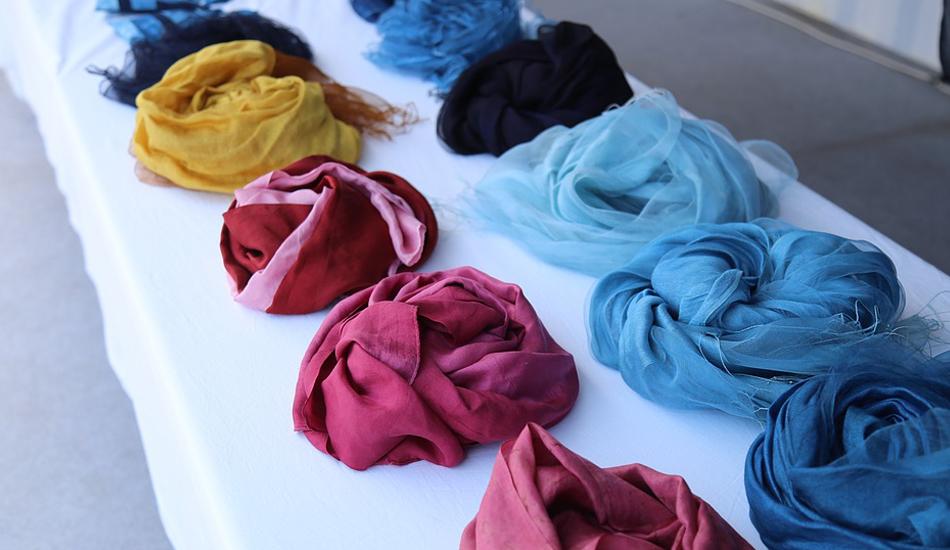There is a growing trend of people opting to dye their clothes using natural, plant-based dyes. Not only does dyeing your clothes the natural way provide natural-looking colors for the fabric, but the process also ensures that no harmful chemicals are used. While this may be a labor-intensive process, natural dyeing is highly recommended if you are someone deeply interested in following an eco-friendly lifestyle.
Dyeing process
Natural dyes, like all dyes, will stain the workspace. To avoid this, cover the space with newspapers or cloth. This will ensure that cleanup is easier. Next, you need to prepare the dye that will be used in coloring the fabric. Pick the plant materials you need for the dye. If the material is a fruit, it must be ripe. Flowers should be in full bloom. Leaves and stems must be healthy.
You can use the materials individually or combine them to get stronger colors. Cut the plant and put it in a large bowl with water. Let it simmer for a few hours or overnight on low heat. The longer the simmering time, the stronger the color of the dye will be. When done, sieve the mixture to separate any plant material from the dye liquid.
Next, take the fabric that needs to be dyed and scour it using soda ash or detergent. If the fabric is protein-based, like wool, silk, cashmere, etc., soaking it in detergent is ideal. But for cellulose-based materials, use soda ash. Keep the fabric soaked in water for about 4 hours on low heat. When the time is up, take out the fabric and soak it in a mordant, which is a mixture that enables the dye to stick to the cloth. Let the fabric remain in the mordant solution for about 20 minutes on low heat.
Once done, turn down the heat and let the fabric cool down. Put the cloth in a fixative for about an hour. This will ensure that the dye does not wash off easily. For dyes made from berries, a fixative can be made by combining 2 liters of cold water with 136.5 grams of salt. For dyes from other plants, use a mixture of 1 part of vinegar combined with 4 parts of cold water.

Take out the fabric and rinse it thoroughly to remove excess mordant and fixative. Now, put the fabric in the dye and let the pot simmer on medium heat until the clothes show the color you desire. Keep stirring in between to ensure that each part of the cloth is dyed equally. Simmering the clothes in the dye for 1 hour will give them a light color. If you do the process for 8 hours or more, the cloth will get a richer color. Wash the clothes to remove excess dye and dry them under the sun. Your naturally-dyed cloth is now ready to be worn.
Tips for dyeing
Colors gained by the fabric will depend on the material. “The best ones to use are those made from natural materials themselves. Cotton, silk, wool, and linen will take the dye the best. Synthetic blends will take some dye, but will usually be lighter in color,” according to DIY Natural. If the cloth has any plastic part, like a zipper or buttons, these won’t get dyed.
Always use a large pot when dyeing fabric. A big pot will accommodate a higher amount of water, which will allow the dye to flow around and get deep into the fabric. Make sure that you don’t fold the fabric when dyeing since the folded regions will likely attract more color and become darker. As such, your clothes will turn out unevenly colored.









